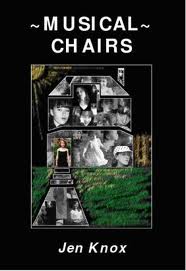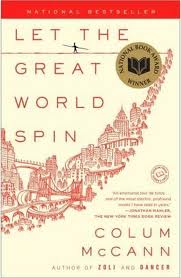|

The Endless Repetition of an Ordinary Miracle, poems by Marjory Heath Wentworth
Book Review by Zinta Aistars
·
Paperback: 88 pages
·
Publisher: Press 53 (April 1, 2010)
·
Price: $14.00
·
ISBN-10: 0982576064
·
ISBN-13: 978-0982576069
The title of
this poetry collection by Marjory Heath Wentworth is as aptly chosen, as precisely picked, as delicately distilled, as every
other word she has written in these 88 pages. The Endless Repetition of an Ordinary
Miracle is a line that comes from Snow by Orhan Pamuk, a novel that is also
miraculous in its ordinary, that is, every day beauty and truth, caught on paper. There is no other, and no more perfect,
way to describe this collection. Like snowflakes, every poem is unique. Like snow, every poem has its ordinary repetition
that we have seen again and again and again. Like snow, these poems are each a little miracle, nonetheless. We have seen snow.
We have never seen snow just like this. We have witnessed an ordinary miracle, and we are snowed over.
Many of Wentworth’s
poems are as if through the eyes of a wondering child, still capable of seeing the magic in the world, standing at its center
with great eyes, open hands and heart, observing it all in remarkable detail and with that rare and exquisite ability to share
it with the rest of us, so the blind, too, may see.
beyond clusters of dark birds hovering
at the edge of sky the wind bends yellow
tipped marsh grass rippling around a rim
of sand uninterrupted waves spilling
one on top of the other
as everything
spins into salt into sunlight
houses rise like castles
built on sand
each home an alchemy of conquest
fire hope for
there is more….
(from “Spring Island, South Carolina”)
Wentworth writes
about her home, several homes, and her life and family, her history, streets she walks, and cemeteries she visits, of winter
rain and the sea and cried tears and stopped clocks, of giving birth and growing up and growing old and senility and disease
and death. Every day things that each and every time are miracles, and she has the artistry to preserve the quality of miracle.
Outside of
home horizons, Wentworth takes on world matters, too, of slavery and genocide and war, bringing these immensities, too, into
the small shapes that we, the readers, can hold and contemplate and absorb. “In Gaza’s Berry Fields” is
such a poem, taking on the immense theme of a mother losing her seven sons in Israeli military fire. A mother’s love
is a miracle, too, perhaps none greater, and we feel it fully, as we join the poet to watch this woman gathering the ripped
apart limbs of her boys and holding them against her. It is horrific, so horrific, beyond imagination. Yet, Wentworth captures
it fully. One moment, the boys are picking strawberries in the field with her, children playing in the sun. The next, “something
hot passes overhead” and she is instead gathering a head, an arm, a leg, kissing each part, each piece, the blood seeping
through her dress as she gathers the limbs. If for no other poem, I would buy the book just to have this one poem as a reminder
of miracles. I won’t pull lines from it here, because it is so tightly woven, it won’t come apart at any corner.
In many of
her poems, Wentworth writes with pauses, leaving spaces between words, as if she is conducting music, and the silence between
the notes is needed for her precise rhythm. Or she will use the pauses to place random thoughts, as thoughts always are, wandering
from tangent to tangent, picking up a thread here only to next slide over there. Wherever she goes, in whatever direction,
Wentworth is a poet to note, and to read, and to stand alongside to see the world again, as if for the first time.
Wentworth is
poet laureate of South Carolina. Her poems have appeared in countless books and magazines, nominated for Pushcart Prizes.
This is her third collection, published by Press53, increasingly an independent press to watch closely for those who read only the best of the best in literary arts.

Musical Chairs by Jen Knox
Book Review by Zinta Aistars
· Paperback: 184 pages
· Publisher: All Things That Matter Press, 2009
· Price: $16.99
· ISBN-10: 0984259422
· ISBN-13: 978-0984259427
Musical Chairs is the gritty memoir of
a smart young woman, Jen Knox, who fell into the life of a stripper. This is not polished writing, but it is what it tells—stripped
down to the bone and honest. The author has not tried to present herself in the best light or to make excuses. She looks in
the mirror long and hard.
It may be that
there is nothing very new here that we haven’t heard before. A girl grows up in a rather unorthodox family, deeply dysfunctional,
ending with divorce. There is alcohol and there are drugs, and there is also a family history of mental illness. But young
Jen is sharp, and she has a strong independent streak. In a fight with her father, still a teenager, she takes up his dare
and walks out into the streets with no place to go. A junkie boyfriend takes her in with his father in the background, a porn
fiend and alcoholic, who tries to rape Jen when the son is out of the house. What you have here is the perfect recipe for
disaster. Indeed, that is what this scenario produces.
Knox stumbles
onto an ad for a job—dancers wanted, no experience needed—and all seems too easy. Big money for almost nothing.
All she has to do is move her body around on a stage in a sleazy night club and take her clothes off. If there is anything
new in this story for which probably most readers already see the ending, it is that this is Knox’s story. As much as
we are all unique individuals, we clearly hear the voice of the author throughout—and every story honestly told is worth
telling. Indeed, at a time when the use of pornography in the United States is at an all-time high, it is a story that should
be told, and heard, and understood, many times over—until it registers.
Knox describes
her experience on the stage, never done sober, as none of the women who strip ever do their job sober. She describes the discomfort,
the fear, the exploitation of both the women and the men, one of the other. She describes the lies told and accepted, the
masks worn, the hidden agendas, the false fantasies. She describes the pimps, the rivalries between strippers, the crime,
the escalating addictions. She describes her own alcoholism, encouraged by her boss as he pours hard liquor down her throat
to get her to dance. It’s an ugly world and Knox puts it straight into the spotlight, unwrapping the truth from
the center pole. On the stage, Knox looks down at the drooling faces and begins to understand her degree of control:
“Take it off, sexy lady!”
These words hit me like a slap to the face. I looked down into the man’s eyes, his eyes on my chest. I wondered
why. I took my hand and followed his gaze with my fingers. I touched the buttons on my shirt; I undid them one at a time until
my pretty black bra was exposed… I looked at him, realizing that I controlled his eyes now.”(Page 81)
As her career
as a stripper progresses, Knox, already lying about her age, continues to feel more and more disconnected. She collects her
cash and closes the door in her mind against what it took from her to earn it. In her personal life, the degree to which she
allows herself to be abused seems to rise in unison with the abuse in her work, including brutal beatings, sometimes at the
hands of other strippers.
“Each day, girls arrived at all times in the late afternoon, making their way, one by one, into the dressing
room for our ritualistic transformation. Glitter and powder designed to lighten or color, conceal or contour, was shared and
traded, becoming community property in our dressing room. We took such care to exhibit our faces; girls, women: our faces
were the focus of that dressing room yet they only ever earned a passing glance from customers as our bodies shifted and twisted
onstage.
“We knew that sexuality was expressed through the eyes and mouth, but our variety of salesmanship
was less nuanced; our product was vulnerability, nakedness, false promise of sexual conquest. Yet, we spent hours in front
of the mirrors smoking, doing lines, gossiping, speculating, all while constructing our masks with care and precision.” (Page 84)
In retrospect
as a more mature woman, Jen Knox contemplates her reasoning, realizing there was little when she was so young and vulnerable.
She cites curiosity and confusion. Not the low self-esteem or daddy issues or too much television, but a need to be seen.
Her writing now, the author says, is a continuation of that need to be seen, heard, defined, even criticized, as long as she
is not invisible.
“I felt empowered, and I got lost in the mystery of the dance: its freedom of movement and rhythm; its ability
to maintain attention, to communicate to the audience. I expressed myself on stage and felt my femininity rise from a stifled
place inside me. My dancing became almost a form of meditation. Until, that is, I looked down at the equally meditative glances
from below. The audiences sickened me.” (Page 86)
The other strippers
warn her that she, like them, will grow to hate men. Hatred and fear seem to be constant companions on the stage. The disconnect
between the person and the actions becomes wider and wider. The disconnect between Knox from herself seems to widen as well.
This is a world in which human beings can function only with compartmentalized hearts and minds.
To preserve
the mask and keep the walls in place, Knox talks about the rules of that dark world. Strippers never date customers, never
give out phone numbers, and when asked for their real names, apparently some use several, none of which are real. Many of
the customers, Knox writes, have the ultimate male fantasy of making a stripper a “community service project,”
saving the stripper from herself, making her into a girlfriend and getting her on track to a better life. To the strippers,
Knox states, these misguided men are the “creepier, disillusioned type,” craving to become heroes.
When a boyfriend
later tells Knox, upon learning about her past, that she is his “dream girl with a sultry, sexy side,” Knox responds:
“Stripping isn’t sexy, it’s a business. It’s dirty, gritty, capitalist exploitation.”
(Page 152)
Eventually,
Knox ends her career. Maturity is a factor, family rebonding, even if with dysfunctional members, rehab centers, treatment
for increasing panic attacks that she experiences, all push her out of the business. While her life as a stripper takes center
stage in this memoir, there are other storylines here that are also worthy of note. Courage in one area of her life opens
up connections to other areas of her life.
Just as she
increasingly shut down before, Knox gradually opens up again to herself and others. She eventually is able to establish a
good relationship with a young man, whom she later marries, and she finds ways to cope with her family. One can’t help
but admire that kind of courage. There may be no greater feat in life to accomplish than looking into a mirror without a mask
on, and Knox finally does just this. She finds that courage when women try to exploit her just as men have, trying to make
her into their personal good deed, a misconstrued altruism, infuriated when she has no wish to accept it. Knox is perfectly
capable of being her own hero, to save herself. She reconciles with family, she goes to college and earns a degree.
She is well on her way to developing herself as a writer, and indeed, by end of book, the writing has achieved a higher polish,
as if in line with the stripper reentering the light.
Knox’s
story is raw, and the writing, too, at times, is raw, but her talent to tell a story is evident. Today, Knox is an editor
for a literary magazine and is working on a novel. Unsurprisingly, she is excellent at marketing herself, turning her early
skills into positive ones. If her need is to be seen and acknowledged, may she be seen and acknowledged, for the story she
is willing to tell is worth hearing.

Marker & Parker, Jazz Poetry/Spoken Word by Marc Zegans with Don Parker on jazz piano
Review by Zinta Aistars
Record Label: Tiny Mind, 2009
Price: $12.97
Let’s
get that disclaimer out here right at the top: I don’t listen to too many spoken word CDs. Marc Zegans’ Marker & Parker is only the fifth such CD that I’ve been sent for review, so I consider myself a novice
at tuning my ear to poetry coming out of my stereo system as I make my too-long daily commute to work down the interstate.
Thing is, I don’t see that changing much. I adore the written word. I like my poetry on the page in front of me. I go
to a great many poetry readings (which are worlds apart from going to slam poetry sessions), and at least in that venue I
can say, with some expertise, painfully few poets can read their work well to an audience.
So there you
have your scene set. Spoken word, or slam poetry, poetry on a stage, really isn’t my thing. It’s guzzling down
something hard and fast that I prefer to sip and savor in solitude. And then there is this difference, too: when you see spoken
word poetry written down on a page, it is nothing, but nothing, like poetry written to be seen on the page. I’ve listened
to just enough spoken word that it is clear to me that it requires an entirely different approach to language. It is, after
all, a performance. These are words meant for aural delivery. Not just words on a page here, but the poet him or herself,
a physical presence, a voice, rich with inflection and tone and profound delivery.
I pop in Marc
Zegans’ Marker & Parker and rev up my engine for the drive. Instantly,
it works. Rack ‘Em. I hear a pool cue snap against a hard billiard ball, and Zegans’ voice snaps with it to bring
me to attention. Jazz pianist Don Parker is playing in the background, at just the right level of enriching the reading, rather
than overwhelming it. Okay, okay, I’m listening …
Shootin’ eight-ball at the I-beam
Wednesday nite tea-party.
Drag queen in a sheer silk dress
Gives me the eye.
Popper wiff hangin’ in the air.
I ignore him and break.
Smack, the cueball hits
The multichrome triangle
At the far end of the table.
Balls scatter.
He gives me the eye
Shows me some thigh.
Feel the mood?
You may or may not. This, again, is not meant to be read, but heard. Imagine a deep, silky voice—one that, mind you,
reminded me a little of a loosened-up Al Gore if we were to find him in a smoky pool hall. Zegans weaves his voice with the
mood, making the mood happen, lets it bounce and sway with the jazzy blues, draws it out so that you feel that sheer silk
dress swish across that bulky thigh. He purrs and slinks and pops and seduces.
Don Parker
keeps tune in back. The master is always the musician who knows when to support, not to take center stage. It is improvised
jazz, loose and easy, now and then nearly missing a note, but with a swift save and back again, nothing jarring. Unlike some
of the other spoken poetry CDs I’ve heard, he knows his perfect place, and his style blends perfectly with Zegans’
style, one complementing the other. On Love that Waitress, Marc Zegans steps in himself with a jazz piano solo, to let us
enjoy his dual talent.
By the end
of my first listen to Marker & Parker, I was in that jazzy groove, and would rather have gone to some smoky lounge than
my office. By the time I was driving home again, I was ready for a second listen. Which is saying something. One of my personal
puzzles over spoken word CDs is wondering how many times might one want to listen to the same poems being read/spoken again
and again. Some half dozen times later, I seem to be approaching an answer.
By now, my
smile is ready as I ease into another listen. By now, I have asked Zegans to provide me the written lyrics, too, and to my
pleased surprise, they work well on the written page, too.
Rigidity
High
above the plunging hill, Jay sits
facing
empty glass, his room spare
a
music stand, a chair, a sigh, a sax
a
silence, and curling sheets of noted
lines
falling.
And by now, I can hear Zegans’ voice in my head as
I read, the two becoming inseparable, word and voice. It turns out “Sunken Contents” may even be better on the
page, as it is a shape poem, moving out like a wave and then sinking back again … yet Zegans accomplishes the same effect
in reading it.
Sunken Contents
In the moment of fall
the slur, the cut, the jibe,
mast snapping, decapitating,
wind driven swing of the boom,
roll over—you dropping too fast,
too deep for them to touch, much
less bring you level. Proclaimed Mingus
you can't be brought low when you are beneath
the underdog, and falling fast from that subjugated
position, humiliation is an indulgent luxury, consumed
by those who imagine that loss of position carries meaning
to
the death…
Zegans’ poetry is about the dark and seedy
pool bar, yes, and the drag queen, but also moves into political themes, taking the “clown prince” to task (with
allusions to philosopher Richard Rorty), with references to the Kennedys, delving into some 30 years of American political
history. The author states it is his answer to “Howl,” with an encouragement
to the listerner/reader to do more than just howl. There is also a sassy seduction of a waitress while mopping up gravy with
slice after slice of white bread (“Mile High”), and a statement about the desensitized health care system that
treats a human being like a body with its tickings recorded on a chart, rather than a man also of heart and mind (“Him”).
Zegans even manages to make a statement about our over-processed food in “Too Fucked to Drink”: “…where
health school lunch/is six french fries/and ketchup, not rotting,/is a vegetable.” In short, there isn't just mood
here; there is also plenty of substance.
Another listen, and I have some walls and misperceptions
about spoken word poetry broken down. It is indeed something that you can plug into your stereo more than once, each time
gleaning something new and different. It can work, sometimes, on the written page just as well, or in addition. And there
are voices, and performers, and pianists, such as this team of Zegans and Parker, who know how to work together to bring alive
a performance that is a true pleasure to hear, to contemplate, to play again … just one more time.

Let the Great World Spin by Colum
McCann
Book Review by Zinta Aistars
·
Paperback: 400 pages
·
Publisher: Random House Trade Paperbacks,
2009
·
Price: $15.00
·
ISBN-10: 0812973992
·
ISBN-13: 978-0812973990
Now and then,
and not so very often, a writer is more of a magician. Perhaps even a medium, channeling other voices, the medium between
the reader and the world he creates before our very eyes--out of nothing, a great something. Such is Colum McCann. It wasn't
long before I was reading this book with reverence, with realization that I was holding in my hands a work of art.
The
opening of the novel is a view of the sky, a mile and some up into the sky, where a tiny dot sways gracefully on a thin wire,
strung between those two well-known towers, now gone. Our eyes are drawn upward, as if we, too, stand there, on the New York
City pavement, heads thrown back. This tightrope walker is a true event from 1974, and McCann has built his fictional world
around him, below him, to catch him and that moment of impossible grace. From high in the air, the author brings our gaze
down, down, to the very depths and darkest corners of this famous and infamous city.
We see pieces and shards of lives,
seemingly disconnected, until by book's end we see--all things, all lives are connected, as if a by a thin wire. We step into
the lives of an Irish priest, of a street corner peopled by hookers sharing heroin needles, of broken-hearted mothers with
sons lost to war, of a Park Avenue judge with frustrated ambitions, and of colorful artists. These are not whole lives, nor
whole images, but pieces, just the same way we glimpse the lives of those around us every day. As if we know them, yet we
know no one, not really, not even ourselves. Yet their experiences are powerful in the way that our everyday lives are--living,
dying, struggling with dilemmas, evaluating our values, getting by.
McCann's writing can be dense, but it is never
out of tune. Never. Draw a finger along with each line, read it aloud, and you will never find one word out of place. He writes
like life is lived, without pretension. He writes the way we think. Choppy sometimes, long and drawn out sometimes, disjointed
sometimes, coming together again sometimes. His intuition of perfect rhythm is breathtaking. His ability to speak as others,
as anyone else, is perhaps the most masterful I have seen in literature in many years, and perhaps even more, perhaps a lifetime
of reading. I am dumbfounded by his ability to write cross-gender, a man who somehow is able to fit himself inside a woman,
and not just any woman, but an African-American middle-aged grandmother who is a hooker, and the fit is... there's that word
again... perfect. He has it. He has her voice. I forget him entirely when I read her, he is gone, she is all that is there,
and she fills the room in our minds with her vivid and vibrant presence. He gets it, how she feels under her hundredth man
of the day, and the next moment how she thinks of her daughter, her grandchild, and fights for her family. What author can
possibly accomplish this? Colum McCann.
"The men were just bodies moving on
me. Bits of color. They didn't matter none. Sometimes I just felt like a needle in a jukebox. I just fell on that groove and
rode in awhile. Then I'd pick the dust off and drop again." (page 206)
She is an astounding character, embodying
the shining best of a woman and the darkest and deepest kind of shadow. There is no judgment made about her, no lecture given,
only a person presented, real and gritty and so close to you that you can see the blood pulsing in her temple and smell the
sweat on her skin. Real. You can't just walk by her.
Another scene that stunned me with its mastery was one of a car
accident, a moment in time captured as if outside of time. The author knows how time spins out in such a scene, and how our
minds slow and speed again, replay the moment from a thousand different angles, spinning and spinning in a dizzying circle
until all the colors blur together.
"The van spun farther. It was almost front-on.
On the passenger side, all I could see was a pair of bare feet propped up on the dashboard. Untangling in slow motion. The
bottoms of her feet were so white at the edges and so dark in their hollows that they could only have belonged to a black
woman. She untucked at the ankles. The spin was slow enough. I could just see the top of her frame. She was calm. As if ready
to accept. Her hair was pulled back tight off her face and bright baubles of jewelry bounced at her neck. If I hadn't seen
her again, moments later, after she was thrown through the windshield, I might have thought she was naked, given the angle
I was looking from. Younger than me, a beauty. Her eyes traveled across mine ... She was gone just as quickly. The van went
into a wider spin and our car kept going straight.... The road opened like a split peach. I recall hearing the first crunch
behind us, another car hitting the van, then the clatter of a grille ..." (page 116-117)
On and on it goes, that
slow unweaving description, spinning us into its vortex, until the image of the spinning van and the woman flying through
the windshield becomes a permanent burn on the brain.
McCann does it again when he describes how the trapeze artist
practices for his masterpiece of a moment, walking the cable strung between the two towers. One would think the author once
again peeled away his own skin, unzipped that of the high wire artist, and stepped inside. Not one detail is missed.
This
is a novel that is nothing short of a ballet of words. Changing rhythms, changing lighting, never losing a step or missing
a breath. McCann won the National Book Award for this book, but I would hold out for even higher awards. I am still trying
to remember how to breathe as I come out of the spin, slowly, of his literary magic.
Colum McCann is the author of
the novels Zoli, Dancer, This Side of Brightness, and Songdogs, as well as two critically acclaimed story collections. His fiction has been published in 30 languages.
He lives in New York City with his wife and three children.

The Keweenaw Puzzle: Busting Myths, Revealing the Truth, and Uncovering the Facts of Keweenaw Stories and Legends by
Richard Buchko
Book Review by Zinta Aistars
·
Paperback: 44 pages
·
Publisher: CreateSpace (May 6, 2009)
·
Price: $9.99
·
ISBN-10: 1441421483
·
ISBN-13: 978-144142148
On one of my
many trips to the Keweenaw, where I once lived and intend to live again, I had buried myself in the northern woods for a week
to work on a novel inspired by my surroundings. I have been traveling to the
Keweenaw Peninsula, a peninsula off a peninsula, the larger one being the Upper Peninsula of Michigan, since I was a little
girl. I lived in Calumet in the early 1990s, left regretfully for greener financial pastures, but am now seeking my pathway
back for my pending retirement years. My heart lives in the Keweenaw.
Anyone who
has ever been there knows that the physical geography of the area is one of the most beautiful in the United States, perhaps
anywhere. It is stunning. Rocky shores of Lake Superior, deep woods, mountains, lakes and rolling rivers, quiet streams, rich
with wildlife. Nothing like it. But there is another aspect of the Keweenaw that tugs on me, too—its history.
Traveling through,
I noted little of it. The little mining houses, all alike in structure, seemed, well, a tad ugly and plain. It was only when
I lived in Calumet myself that I truly began to appreciate the story behind those houses, the legends that wove around that
beautiful wilderness. I am not necessarily a history buff, but when I walked Calumet streets in early mornings and late evenings,
after the work day was done, I could swear I felt the ghosts of centuries around me. I was told the apartment in which I lived
on Fifth Street, the main street of the village of Calumet (population, approx. 1,000), was haunted, as were most of the buildings
there, many built in the late 1800s. I sensed that spirit, and more than once, saw its passing shadow, heard its light step.
On those many
walks, and in many conversations with those who had lived in the area all of their lifetimes, perhaps over several generations,
I heard the legends. I heard the rumors and the myths. Before long, I found myself ransacking the Houghton library history
shelves. I read them all, all the local publications, and when I got a job working at The Daily Mining Gazette, the Keweenaw
newspaper, I always had my eye open for local history. A favorite part of my job at the paper was writing up a short piece
on “This Day in History…” That brought me to the archives, and I spent many fascinating hours paging through
yellowed, crackly newspapers.
Only natural
that I would notice Richard Buchko’s slender book in Einerli, a little boutique in Chassell, another tiny town at the
foot of the Keweenaw Peninsula. The store owner told me she had put it on the shelf just that day. Serendipity, I thought,
to find a history on the area I had not yet read. I bought it.
In the introduction,
the author tells us he is not a native “Yooper,” U.P. resident, but is now an adopted one, having moved to Calumet
but a year prior. “I’m a troll—or I used to be, depending on how
you look at it. A troll is someone who lives (or lived, or was born) under the bridge. Depending on your age and where you
were brought up, that either means someone who lived below the Mackinac Bridge in the lower peninsula of Michigan, or for
some it means living south of the lift bridge over Portage Lake. I moved here a little over a year ago, fulfilling a desire
I’d had for almost three decades. What fueled that dream I couldn’t say, but I always felt that this was where
I belonged…”
Gee, can I
ever identify. Apparently, this author had felt the burn, too, and was equally, or more so, drawn to the local history as
well. I settled in for the read. Fun facts dotted the pages, such as: “Keweenaw Fact: Lake Superior contains 10 percent
of all the fresh surface water on Earth, and contains more water than the other Great Lakes combined.”
The book then
takes up one popular myth after another, either validating or debunking each one. The first one up was about Calumet nearly
becoming the capitol of Michigan. Yup, I’d heard that one many times. Debunked. Next myth: Portage Lake Pioneers, the
Keweenaw ice hockey team—had they been the 1904 winners of the Stanley Cup? Debunked, but not without a terrific consolation
prize. Hockey fans take note—the Keweenaw is indeed the birthplace of professional ice hockey, and the Portage Lake
Pioneers were the first U. S. champions in the sport.
And so the
author takes on one wonderful story after another, carefully citing his sources and aligning his evidence to support his claim,
one way or the other. A few photographs entice with faces and buildings of long ago, many of the latter still standing. Had
Houdini really performed at the Calumet Theater? Was there really a wall of pure silver in one of the many mines? Who was
Big Annie, that 6 feet 2 inch tall woman whose smiling face appears in old Calumet photographs? What do we really know about
the mysterious mound builders of Isle Royale? Was George Gipp (“win one for the Gipper”), star football player,
really from Laurium? And what do we really know about the Italian Hall disaster on Christmas Eve 1913, resulting in the death
of 73 people, burned to death—only the doorway arch remains, standing as a monument where the building had once stood?
So many times, I had walked through that arch, back and forth, pressing my palm to the stone to feel the warmth, and wondered
at the long ago tragic night.
What a delight
is this little book for anyone smitten with U.P. history and beauty. I am pleased to have it. Based on the author’s
recommendation, I plan to pick up a copy of Steve Lehto’s Death’s Door,
to learn more about the Italian Hall Christmas Eve disaster. History gives us ground to stand on, deeper understanding, and
great stories, true, and legends for the imagination.

Secrets: You Tell Me Yours and I’ll Tell You Mine … Maybe by Dr. Barbara Becker Holstein
Book Review by Zinta Aistars
·
Paperback: 128 pages
·
Publisher: Enchanted Self Press (April
2, 2010)
·
Price: $8.95
·
ISBN-10: 0979895219
·
ISBN-13: 978-0979895210
What little
girl doesn’t love opening a diary, one of those puffy books with a little metal lock on it with a tiny key on a ribbon?
Many of us had them. I did. I still have mine somewhere, I’m sure, filled with nonsense about what I ate that day, how
much I hated the new dress Mama made me wear to school, and with long, deep, philosophical conversations between me and my
cat carefully transcribed, complete with the feline’s responses. It’s a girl thing, I think, and psychologist
Barbara Becker Holstein has done a fun job of quite accurately capturing that girlishness.
The slim book,
written for girls age 9 to 12, with questions for discussion at back, is written with a font that resembles handwriting to
add to the effect of reading a diary. Dear Diary, begins each entry, and the writer
of the diary is a 13-year old girl who remains nameless as she narrates her life, filled with delicious secrets. None of these
secrets are the sort to give parents shivers. They are the typical fare of many tweens, about first crushes on boys, shopping
for training bras (I agree with the girl: I never understood this odd concept of “training” either), moving to
a new house, making new friends and outgrowing old ones, coping with a new baby in the household, encountering a family death
for the first time, and other such.
I wondered
as I read, however … is this really the mind of a current-day average 13-year old girl? Oh, I hope it is, but it little
resembles me at 13, nor my daughter at 13, nor my nieces at that age. It reminded me more of the 9- or 10-year old, because
each year at that stage can be quite dramatic in its changes, physically and emotionally. One likes to think of such innocence
at 13, but with today’s fast forward adolescence, I wonder if this book isn’t off by a couple years or so. Statistics
show that the average age today of losing one’s virginity is 14 and falling. Puberty, perhaps sped up by various pollutants
(I’ve read about toxic components in plastics, in lotions, in water, and so on, that wreak havoc on hormonal imbalances),
is starting earlier than it used to. Scientists don’t seem to yet know exactly why, but articles abound on the topic.
The average age of exposure to pornography online, according to some studies, is age 9 (parents: take note). Indeed, in Secrets, there is no mention of modern technology in this girl’s life, even
while we look around us to see 13-year-olds with cell phones glued to their ears and iPods drumming the beat through earphones.
Realism aside,
a possible miss of age group left up for debate, the book is fun. The girl’s mind travels in ways surely many of us
recognize from our childhoods. Her moments of anxiety, quickly countered by her moments of sheer joy for seemingly trivial
reasons, her attachments to sentimental objects such as her locket, which keeps getting lost and refound again, putting her
through spasms of worry—all the stuff of American girlhood. We recognize the pleasure of connecting with an adult who
will take the time to talk to you, really talk to you, and listen, as her aunt does. We recognize the warmth and comfort of
young gal pals, sharing silly secrets, and the importance of those first bonds. We recognize, those of us who are so lucky,
those connecting moments with our mothers, too, when we find ourselves on the same frequency perhaps for the first time as
maturity begins to take hold.
There is, too,
that teenage angst for American girls who wonder if they look right. Bombarded with false and heavily manipulated images in
magazines, television and movies as we are in this society, one wonders how a young and growing girl cannot sink into despair
at what is, actually, her normal self. The author does here a good service, surely, in giving a young reader comfort in knowing
this angst is quite normal today:
“Why do I hate to look at myself in the mirror sometimes? I used to love to look at myself.
I even played dress-up in front of it. Now I feel so rotten when I look at myself. I see everything. I see too many freckles
on my face. I see my teeth looking back at me, not pearly white but slightly yellow with a space between the front teeth that
looks larger every time I examine it. I see big ears even though my mother said I don’t have big ears. And I see fat
on my body. Baby fat is not cute at 13.” (Page 60)
A first crush
unfolds, and we read the girl gush about love, big and dramatic, one moment for one boy, the next for another, then back again.
All part of growing up. The girl goes on and on to her mother about the boy named Rob as the two share regular dinners at
a favorite restaurant. Each time she does so, the older male waiter stands by and waits and listens (eavesdrops?), which did
leave me puzzled. What waiter does that? A lurking waiter will get nabbed in the tip, I would think, but I won’t go
on to spoil the twist in the story with this waiter, only say that the twist left me even more puzzled. One hopes the author
will make this seemingly pointless interlude become meaningful in the next book in this series (Secrets is the second book in what is called “A Truth Series Book”), because in this one it merely
frustrates.
Secrets can be a valuable book for young
girls, more 9 than 12, quickly read, quickly absorbed, sending its message of positivity. In a rough and tumble world, where
it is not easy at all to be young, this “diary” can offer comfort and reassurance that change is normal, that
discomfort can quickly enough turn into comfort, and that family bonds are always valuable for growing up with good grounding.
Dr.
Barbara Becker Holstein, internationally known Positive Psychologist, is the creator of The Enchanted Self, a systematic way of helping to bring more joy, meaning and purpose into our lives. Dr. Holstein has been a school psychologist
for more than twenty five years. She has taught elementary school children and was an assistant professor of education at
Boston University. She has been in private practice as a psychologist with her husband, Dr. Russell M. Holstein, in Long Branch,
New Jersey, for over twenty five years.
|

